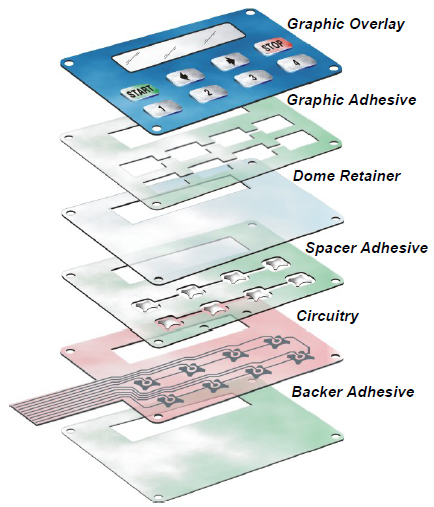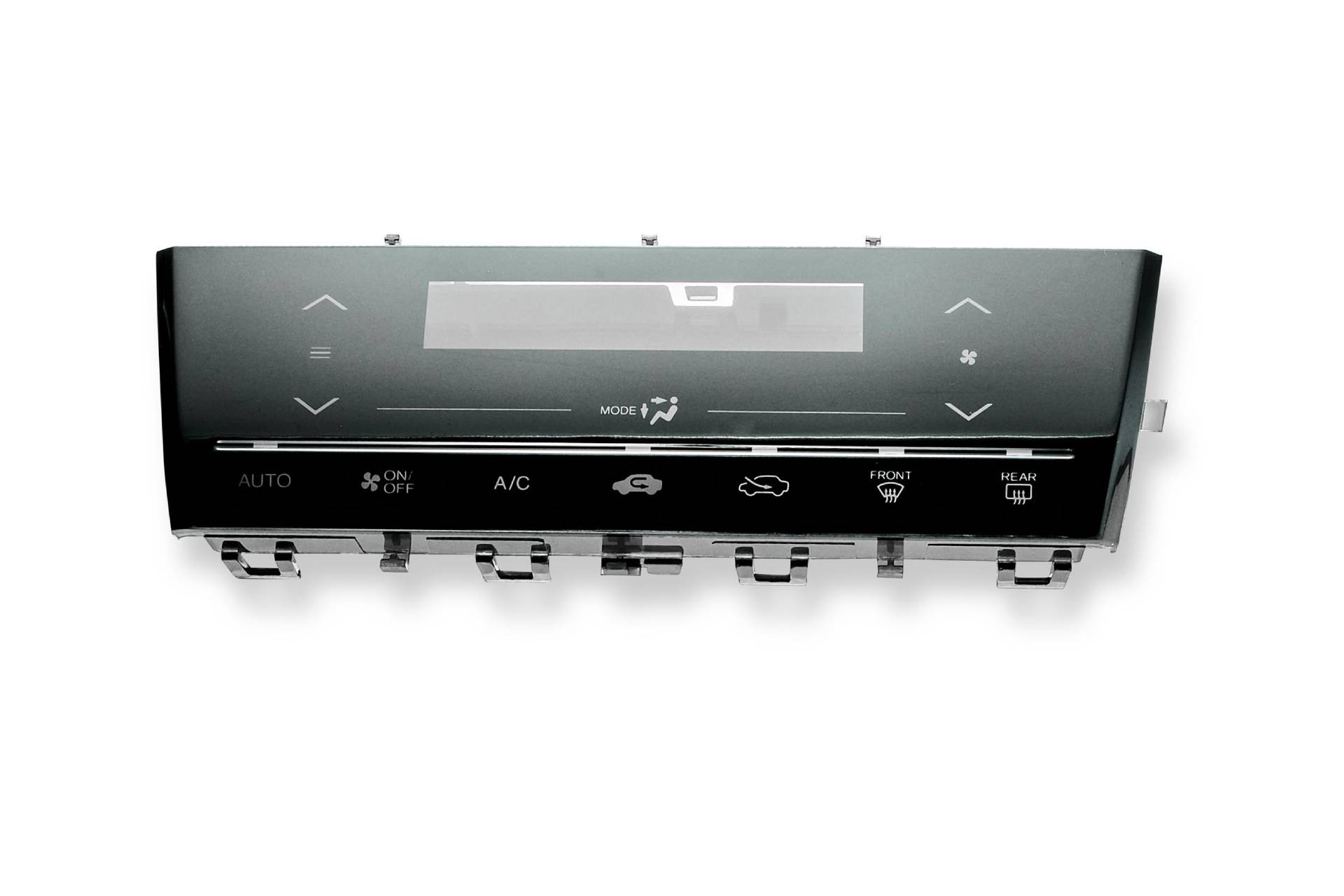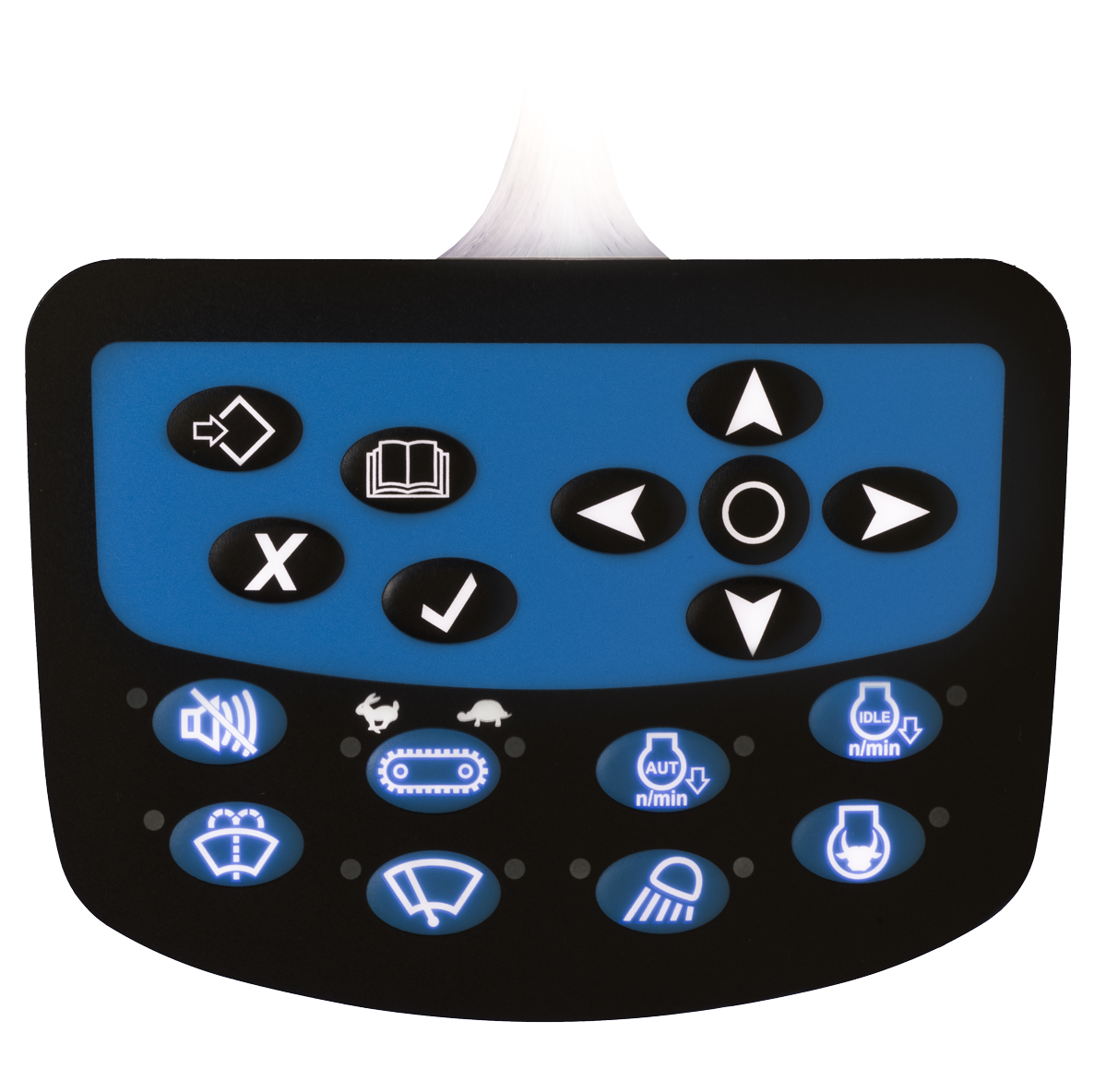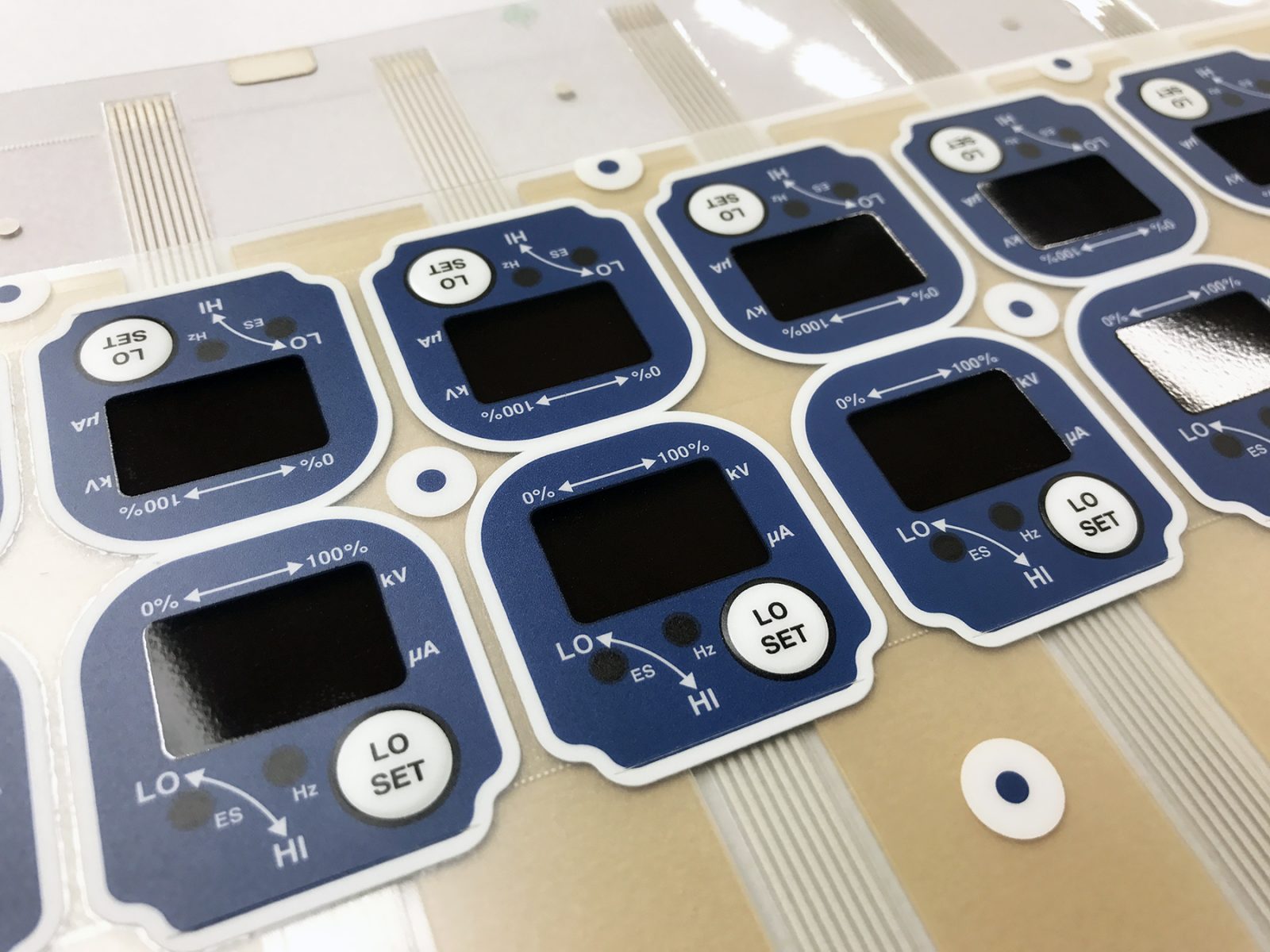When custom interface needs arise, a specialized membrane switch manufacturer is the best choice.
When custom interface needs arise, a specialized membrane switch manufacturer is the best choice.
Blog Article
All About Membrane Layer Switch Over: Recognizing Its Design and Performance
When you consider the control user interfaces in modern-day devices, membrane layer switches frequently enter your mind. These parts are greater than just switches; they mix style and performance flawlessly. Recognizing how they work and what makes them effective can alter your perspective on daily electronic devices. There are subtleties to their layout and efficiency that you may not be aware of. Let's discover what collections membrane layer changes in addition to various other control systems.
What Are Membrane Layer Buttons?

Membrane layer switches can also be customized pertaining to form, dimension, and graphics, enabling suppliers to create distinct interfaces tailored to certain items. Overall, membrane layer buttons play a considerable duty in enhancing individual experience across a wide variety of applications.
How Membrane Switches Job
When you press a key on a membrane button, it triggers a simple yet reliable mechanism. The top layer, usually made from versatile material, presses down onto a conductive layer below it. This action bridges the space in between conductive traces, finishing an electrical circuit. As soon as the circuit closes, it sends out a signal to the tool's controller, which analyzes your input.
You'll notice that the tactile feedback differs based on the switch design, using either a soft click or a more pronounced feedback. Once you launch the secret, the membrane layer returns to its initial position, resuming the circuit and stopping the signal. This procedure takes place almost instantly, making sure a receptive customer experience.
Membrane buttons are preferred due to their sturdiness and resistance to dirt and dampness, making them optimal for various applications, from family devices to medical gadgets. Understanding this operation helps you value their extensive usage.
Key Elements of Membrane Layer Buttons
Recognizing the crucial parts of membrane layer switches is basic for grasping their capability and design. At the core, you'll locate the graphic overlay, which gives the aesthetic user interface for customers. Underneath that, there's a spacer layer that divides the circuit layers, ensuring that they don't make get in touch with till pushed. The circuit layer is where the magic takes place; it includes conductive traces that finish the circuit when you push the button. An additional important element is the adhesive backing, allowing the button to follow surface areas firmly. The safety layer shields versus environmental elements and put on, extending the button's life-span. Each element plays a substantial role in making sure dependable performance and individual interaction. By comprehending these components, you'll obtain understanding into just how membrane changes run and their significance in numerous applications.
Products Used in Membrane Switch Over Style
The performance and longevity of membrane changes greatly depend on the materials used in their style. You commonly run into polyester and polycarbonate as key substrates as a result of their excellent toughness and adaptability. These products stand up to scrapes and chemicals, making them excellent for requiring atmospheres.
The conductive layers typically make use of silver or carbon, picked for their dependability and conductivity. membrane switch manufacturer. Silver gives exceptional performance, while carbon is a cost-effective option. For the overlay, you may consider a matte or shiny finish, depending on your visual requirements and individual experience
Make specific to select adhesives that withstand environmental variables like temperature and moisture. Choosing the right products will assure your membrane layer switch stands the examination of time.
Design Factors To Consider for Membrane Layer Buttons
While designing membrane layer buttons, it's essential to take into consideration numerous aspects that influence their performance and user experience. Start by concentrating on the design and button size; make sure they're user-friendly and simple to browse. Take into consideration the tactile comments you desire to provide-- will users require a noticeable click or a softer touch? Furthermore, believe concerning the materials you'll use, as they'll affect sturdiness and visual appeals.
Validate your style fits environmental variables, like wetness or temperature variants, which could influence performance. By very carefully considering these elements, you'll develop a membrane layer button that improves use and satisfaction.
Applications of Membrane Buttons
Membrane switches are flexible elements found in various applications, from industrial devices to consumer electronics. You'll see their impact in devices that require long lasting user interfaces and in gadgets that profit from sleek layouts. Recognizing these applications aids you appreciate the capability and usefulness of membrane buttons in daily innovation.
Industrial Tools Usage
When you're aiming to enhance the performance of commercial equipment, membrane layer buttons supply a trusted option that incorporates resilience with user-friendly layout. These switches are best for rough settings, offering resistance to dirt, wetness, and chemicals. You'll find them in control panels for manufacturing makers, cooling and heating systems, and clinical devices, where precision find out and responsiveness are vital. Their reduced account suggests they fit seamlessly right into various devices, saving valuable space while preserving simplicity of usage. With personalized graphics and backlighting alternatives, you can my site create an user-friendly interface for drivers, enhancing effectiveness and safety and security. Plus, their long life expectancy decreases maintenance expenses, making them a smart investment for your commercial applications. Welcome membrane buttons to improve your procedures and enhance total performance.
Customer Electronic Devices Assimilation
In the domain name of consumer electronic devices, membrane layer buttons play an important role in improving user interaction and device capability. Membrane layer buttons also ensure durability and resistance to dust and dampness, prolonging the life-span of your electronics. By selecting membrane buttons, you enhance not simply the capability however also the design of your tools, making everyday interactions smooth and pleasurable.
Benefits and Drawbacks of Membrane Layer Switches
While membrane layer buttons supply a series of benefits, they also include some drawbacks that you should consider. One significant benefit is their small style, making them ideal for space-constrained applications. They're additionally cost-efficient, providing a durable option with a reduced manufacturing cost. Furthermore, their seamless surface area is simple to clean, improving hygiene in settings like healthcare facilities.

Nonetheless, there are disadvantages. Membrane buttons can have a shorter life-span contrasted to mechanical buttons, specifically under heavy usage. They can likewise be less responsive, which could influence user feedback throughout procedure. Furthermore, if damaged, fixing them can be tough and commonly requires full substitute. Ultimately, their level of sensitivity to extreme temperature levels and ecological problems might restrict their performance in specific setups. Stabilizing these pros and disadvantages will help you figure out if membrane buttons are the check over here ideal fit for your project.
Frequently Asked Inquiries
How Much Time Do Membrane Changes Typically Last?
Membrane layer switches usually last between 5 to 10 years, depending upon use and environmental problems. You'll intend to examine aspects like wear, exposure to dampness, and temperature level changes to evaluate their durability properly.
Can Membrane Switches Be Custom-made for Certain Styles?
Yes, you can tailor membrane layer switches to fit specific styles (membrane switch manufacturer). You'll have the flexibility to choose shades, forms, and designs that match your task's needs, guaranteeing they blend flawlessly with your overall visual
What Is the Cost Array for Membrane Switch Over Production?
The expense variety for membrane layer button manufacturing normally falls between $1 and $10 per device, relying on elements like design intricacy, amount, and products. You can obtain quotes from suppliers to find the very best alternative.

Are Membrane Layer Changes Water-proof or Immune?
Membrane layer switches can be developed to be water-proof or immune, depending on materials used and building and construction methods. If you require them for wet environments, assure you define those demands throughout the design procedure.
Exactly How Do Membrane Layer Switches Compare to Traditional Buttons?
Membrane buttons are typically thinner and extra adaptable than typical buttons, using a smooth style. They're often easier to clean and incorporate, but could not offer the tactile comments you're made use of to with mechanical alternatives.
Verdict

Report this page